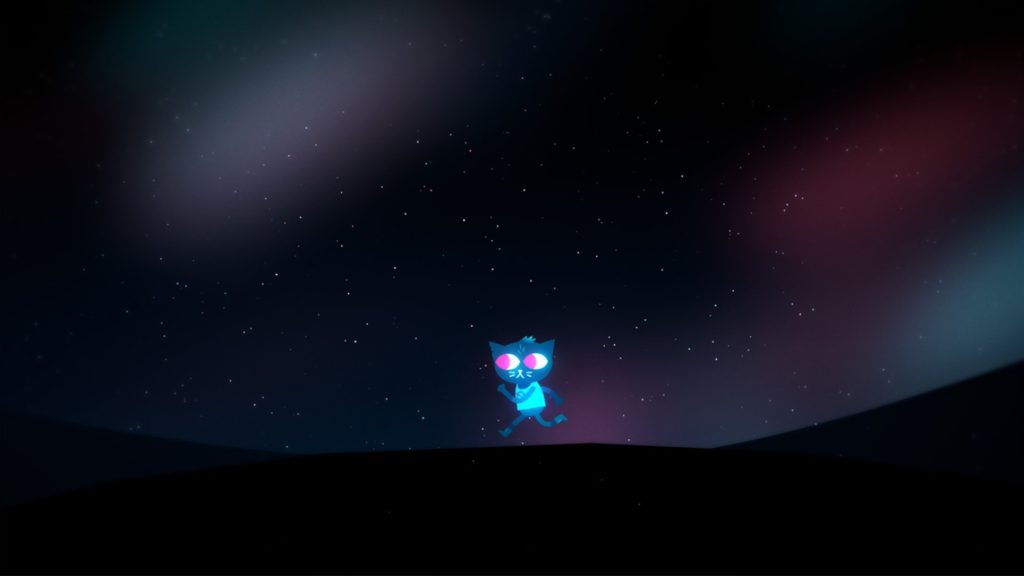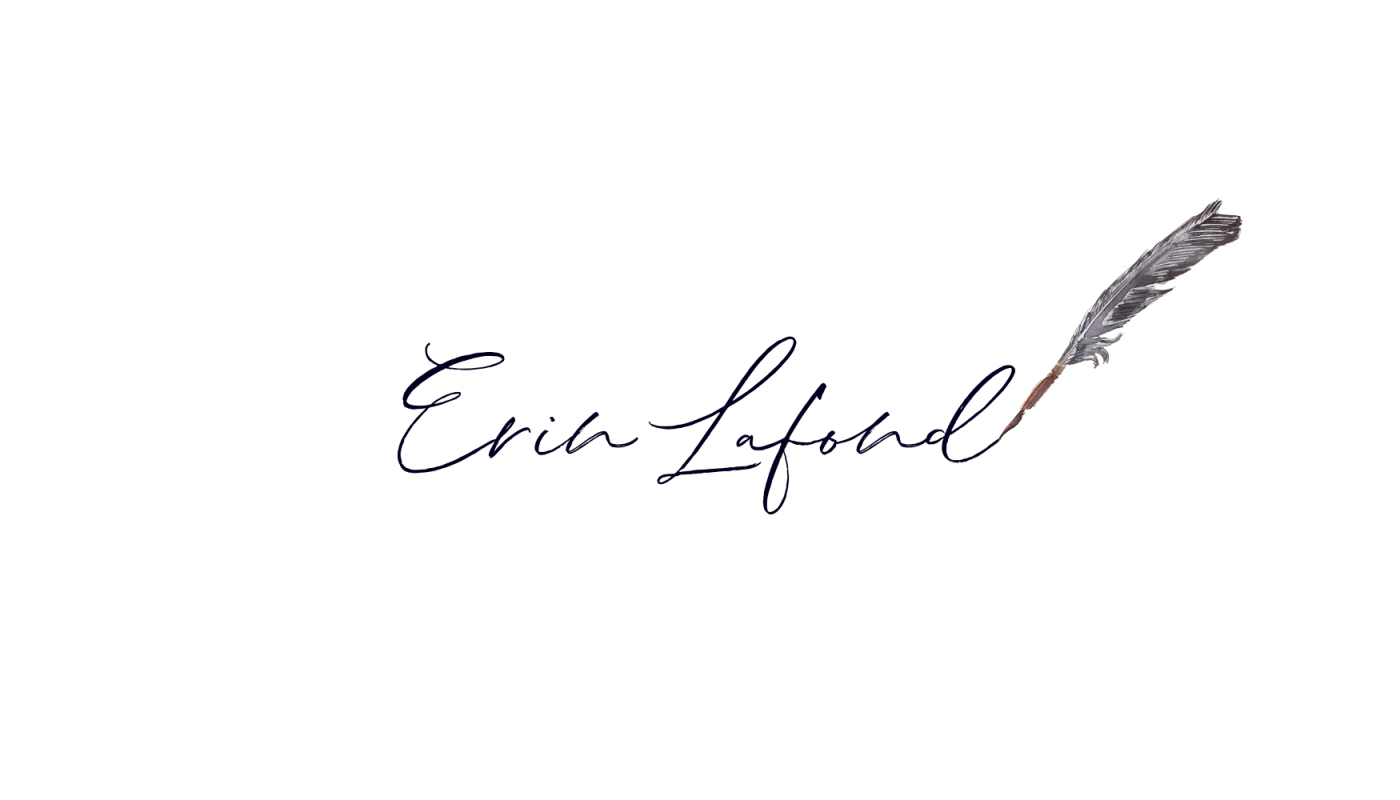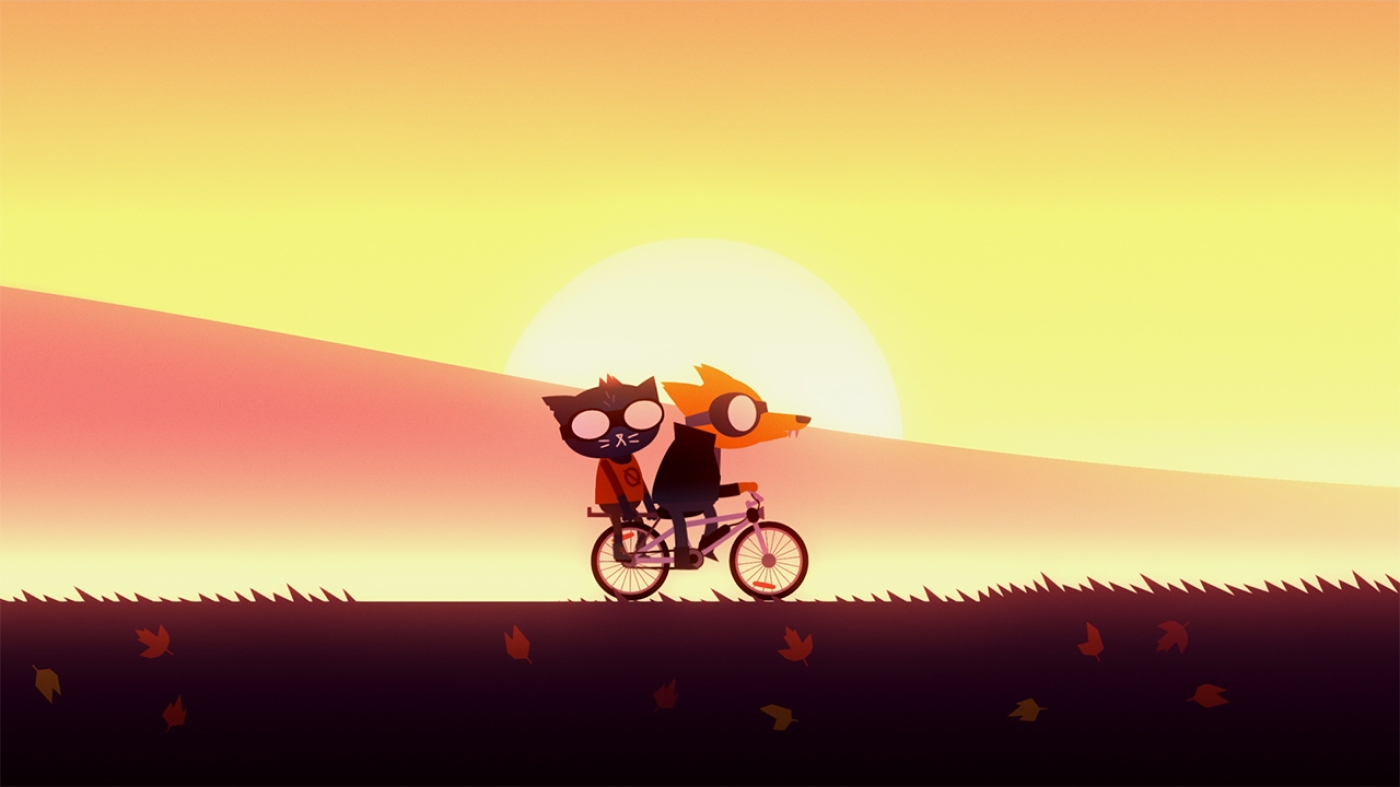A Close Reading of Night in the Wood’s Possum Springs
Last updated on August 11th, 2025 at 09:12 am
Throughout the indie game Night in the Woods, there’s an undercurrent about small-town life and politics that becomes a full-on wave as the game goes on. What’s really background information about the town and its inhabitants becomes the driving force of the game. At its core, Night in the Woods is about feeling left behind, the connections that sustain us, and survival. The indie darling wears its politics on its sleeve through its representation of Possum Springs and its people – from Mae and her loved ones to the random inhabitants you’re able to listen in on throughout town.
Spoilers ahead.
Your Basic Summary
Night in the Woods centers around a 20-year-old named Mae Borowski. Fresh from dropping out of college, Mae arrives in her small hometown, Possum Springs. She dodges her mother’s questions about college, reconnects with her childhood friends, and starts spending her days reexploring Possum Springs. I’ve always found Mae to be a sympathetic if difficult character. She’s often immature, even though she has good intentions, and she shoots herself in the foot more than once. But she wants so badly for things to be good.
As the game goes on, things become more surreal and creepier, if not dangerous. During Harfest, the town’s fall celebration, Mae sees someone be kidnapped by a dark figure, and no one believes her, partly because she thinks it’s a ghost at first. Her somewhat idyllic days of looking at stars with her former teacher and playing bass with her friends start to twist. Through research and dark dreams, Mae starts to unravel a deep mystery within her hometown, a cult that feeds town members they think won’t be missed to a mysterious entity that supposedly sustains the town.
She discovers this with her childhood friends, Bea, Angus, and Gregg. They are her support system, despite struggling with their own intense issues. They don’t believe in her ghost as first, but they help her investigate, and they listen to her.
At the end of the game, they confront the cult, listening to their reasoning and understanding of the world, an understanding that is firmly rooted in small town fear and beliefs. In their escape, a rogue cult member’s actions result in the entire cult being trapped in an old mine with no way out. Mae has her own individual confrontation with the mysterious entity, and we watch the group process the events so they can try to move on.
It is impossible to separate the main story from Possum Springs. While the focus of the story is absolutely on Mae and her relationships, Possum Springs is inextricably linked to this.

The Representation of Possum Springs
Possum Springs is an old mining town, one that has faced a series of intense struggles, from creating a thriving union through violence in the far past to a more recent massive flood that did a lot of damage. Now, it’s a fledging town. Anyone who can afford to leave is doing so, and businesses are closing left and right. There are no real, sustainable jobs. The ones that are left don’t really provide or they’re outside of the town.
I grew up in a very small town. When Dunkin Donuts (the first franchise) opened up, it was huge news. Despite the significant geographical size of the town, it boosts two gas stations and no grocery stores. The gas stations have small stores, but if you want to actually go grocery shopping, you’re going out of town, and that drive is going to take you thirty to forty-five minutes, depending on where you live.
So, when I first entered the world of Possum Springs, it felt familiar. Mae is shocked to find out that her town now has a Snack Falcon (an equivalent to 7/11) and that the local grocery store has closed. Everyone needs to take the highway to the Ham Panther now, a more chain grocery store that treats its employees the way you’d expect from a chain. We learn more about this as Mae’s father works at the Ham Panther and clearly suffers from it.
As Mae walks through the town, she meets a variety of people. These people fill out the town, making it feel lived in and real. For an indie game, the amount of people you can talk to who have interesting backstories and things to say is remarkable. There are a couple of notables I want to mention.
The first is the City Council, which is made up of four members, each with their own unique voice and perspective. Their concern is building Possum Springs back up to what they consider its heyday. They want to bring business back to Possum Springs and make it a cultural hub. Despite their good intentions, their focus is often misguided. The church’s pastor tries to convince them to face the town’s homeless problem by providing shelter in the church, but the City Council is concerned with optics, and they deny her request. Their focus on the vandalization of a town mural is strong. The perceived harm is overstated and seems strange in the face of Possum Spring’s bigger problems. In general, the City Council is too focused on trivial issues to create any real change, but they clearly want to do good within their community. It is worth noting that all four members are still present after the collapse of the mine and ending of the cult.
The second group of people I want to mention is the Telezoft employees, including Donna, who is struggling with her job at Telezoft. Her sales job is really starting to affect her mental health, and she talks to her coworker about being unable to sleep. Her coworker suggests medication, and she points out that she shouldn’t need to drug herself to survive her job. Eventually, Donna leaves Telezoft for the Ham Panther, which we know from Mae’s father isn’t much better. It’s through the Telezoft employees that we get our first inkling about the different jobs in Possum Springs and how trapped many of its residents are. There aren’t many jobs from the get-go, and the ones that are available don’t provide enough money or life balance.
Overall, Possum Springs is on its last legs, and its residents are just trying to get by but unsure how to do so.
“There is No Reception in Possum Springs”
Around the middle of Night in the Woods, Mae and Bea go to a library to check out new articles about ghosts. During this trip, they run into a meeting of the town’s Poetry Society. A character named Selmers presents her poem. Up until now, Selmers’s poems have been chill, fun, and cute. They’re about snacks and Halloween.
This poem is not that. It’s called “There’s No Reception in Possum Springs,” and it reads:
No reception here
I wave my black phone
In the air like a flare
like a prayer
but no reception
I read on the Internet baby face boy billionaire
Phone app sold made more money in one day than my family over 100 generations
More than my whole world ever has
World where house-buying jobs became rent-paying jobs became living with family jobs
Boy billionaires
Money is access
Access to politicians waiting for us to die, lead in our water, alcohol and painkillers
Replace my job with an app
Replace my dreams of a house and a yard
With a couch in the basement
“The future is yours!”
Forced 24-7 entrepreneurs.
I just want a paycheck and my own life
I’m on the couch in the basement they’re in the house and the yard
Some night I will catch a bus out to the west coast
And burn their silicon city to the ground
Selmers’s poem, on some level, is a throwaway. It’s not part of the plot. You don’t even need to talk to Selmers. You can ignore her completely. But her poem is the crux of the story, an outright stated belief of the game. You can read the game’s view of small town and gain a better understanding of its antagonists through Selmers’s poem.
Because fundamentally, Night in the Woods and Possum Springs is about how you can’t stop change and the disappointment of living in a world that neglects you. The cult members are misguided and wrong, but their motivations are still understandable. You can understand the pure frustration of watching your world crumble around you and feeling powerless. They feel left behind by the larger world, which isn’t trying to help them. Selmers isn’t asking for much. Simply “a paycheck and [her] own life.” And yet, it seems like an impossible ask in the current world.
Conclusion
There are many reasons why people, especially young people, identify with Night in the Woods. It’s a stark and refreshing examination of mental health. The friendships are moving and realistic. There’s a fierceness to Mae that’s inspiring. When she says to the mysterious being at the end, “I want it to hurt,” you feel this deep connection to her.
But beyond that, this game understands small-town life and the feeling of being left behind. Possum Springs is a town of struggle. Struggling to create a union so you can have a better life. Struggling to survive catastrophic events so you can keep going. Struggling to build up even as everything collapses around you.
But it’s also a game of hope. If you’ve explored enough, Mae gets a moment with her father at the end, during which he talks about how a job is supposed to respect you. It’s supposed to pay you enough to live and give you balance. Using a fairly gross family heirloom tied to the old union, Mae reminds her father that they still have power. And when her father asks if she’ll walk out and march with the employees of Ham Panther, Mae tells her father that she will “breathe fire.”
Night in the Woods tells us that we have more power than we think we do. The crux is that you have to stay empathetic and work to connect with your fellow human. The City Council is misguided because their focus is on optics and business rather than truly helping their community. The cult thinks they can decide who has value and who doesn’t, and they misunderstand where their problems are really coming from. The old Possum Springs union workers succeeded because they stuck together and faced power as a group. Mae and her friends are effective because they truly care for each other and are willing to walk into danger together.
The world might not care, but you should. At the end of everything, hold on to anything.
Image Credit: Infinite Fall


4 Comments